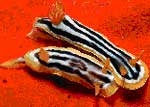Many people will surely be astonished by the gigantic and fearsome appearance of the world’s largest freshwater “monster.”
Arapaima – The Largest Freshwater Fish in the Amazon
When we think of giant fish, we often imagine shark species, dolphins, or whales in the ocean. However, right in river regions, you will be surprised by the enormous sizes of various fish species.
You will undoubtedly be amazed by the colossal fish known as Arapaima – the freshwater “monster” of the Amazon.
Discovered by Swiss biologist Louis Agassiz in 1829, the Arapaima (also known as Arapaima gigas, or Pirarucu, derived from “pira” meaning fish and “urucum” meaning red) belongs to the Arapaimidae family within the Osteoglossiformes order. Arapaima is considered one of the largest freshwater fish species in the world, living in the tropical regions of South America.
This species was discovered by the Swiss biologist Louis Agassiz in 1829. They are endemic to the Amazon River and the Essequibo River in South America.

Adult Arapaima can reach lengths of over 2 meters, with some individuals measuring more than 2.5 meters and averaging around 100 kg in weight.
In exceptional cases, the weight of an Arapaima can reach up to 200 kg, growing up to 3 meters in length. A record has been noted of an Arapaima measuring 4 meters and weighing 300 kg.
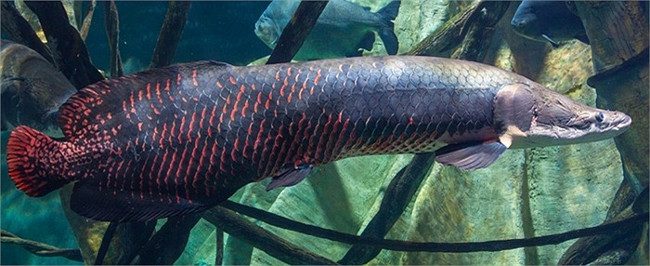
Young Arapaima have silver-grey scales, a round and elongated body, with a head resembling that of a snakehead fish. Mature individuals display darker hues, transitioning to brown-grey with a metallic sheen.
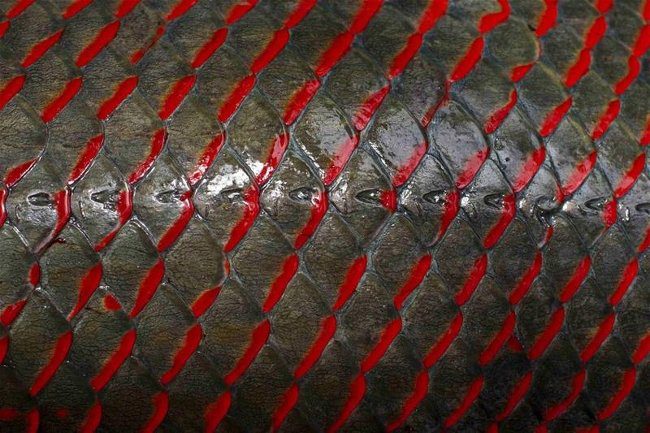
On the dorsal fins, tail fins, and anal fins of the Arapaima, orange-red spots appear, making them even more distinctive.
Despite their large size, Arapaima are quite timid. When startled, they thrash and splash water vigorously as a way to display their appearance.
As a result, many experienced anglers often advise that when hunting this fish, you should not scare them. Only when you see them surface and swim calmly can you have a chance to catch them.
One remarkable feature of the Arapaima is their ability to breathe by gulping air from above the water’s surface. Besides using their gills, this fish can also “decompress” oxygen from the air thanks to a network of capillaries in their throat, which functions like lungs in terrestrial animals.
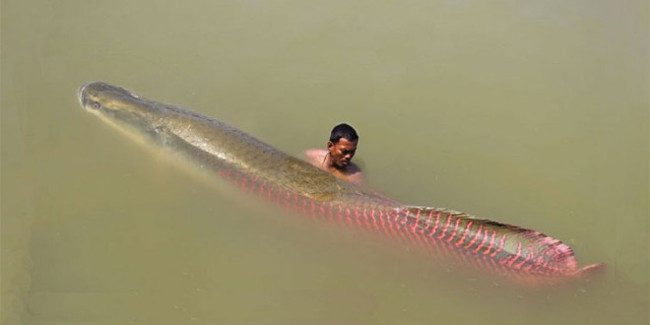
Thanks to this adaptation, Arapaima can survive through dry seasons or in low-oxygen conditions in the Amazon floodplains by burying themselves in the mud and breathing through their mouths. However, this air-breathing must occur every 5 to 15 minutes.
The ideal environmental temperature ranges from 25 to 29 degrees Celsius, with water hardness from 8 to 10 (dH) and a pH range of 6 to 6.5.
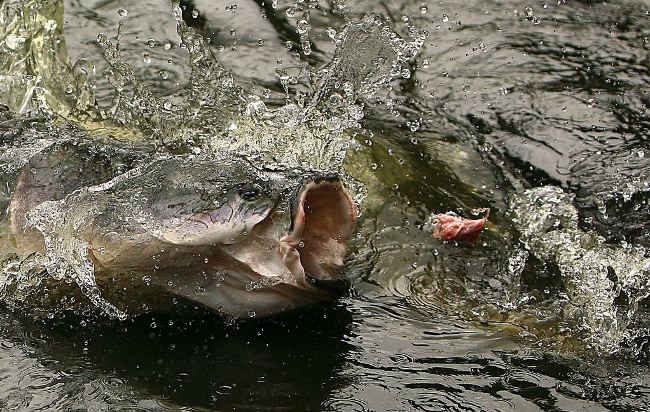
The daily diet of the Arapaima includes fish, crustaceans, and small creatures near the shore. However, sometimes, Arapaima display their strength by leaping several meters out of the water to catch prey like snakes and birds. In extreme hunger, Arapaima may even attack juvenile crocodiles.
The Arapaima has quite sharp teeth for slicing through prey. Therefore, many believe that in the Amazon River, the Arapaima is the number one predator.
Despite their large weight, Arapaima are still very agile when hunting, resembling the hunting style of whales. They quietly approach their prey and then suddenly accelerate, opening their mouths wide to engulf the prey. Typically, once a prey enters the Arapaima’s sights, escape becomes nearly impossible.
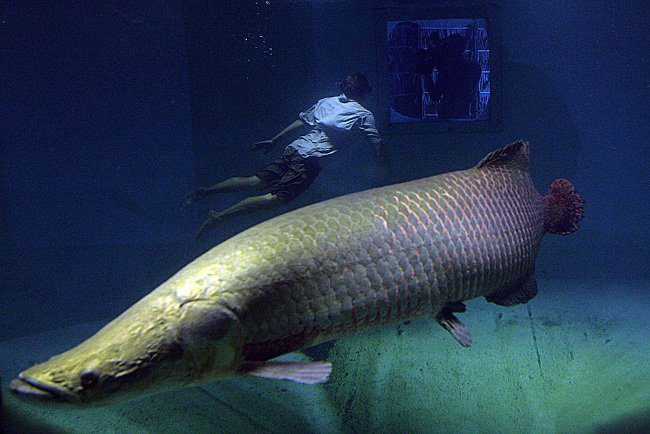
The Arapaima also exhibits reproductive behavior similar to that of other bony fish. This means that after the female lays eggs in a nest, the male will fertilize them and then hold the fertilized eggs in his mouth from the first month until the fourth month. When the rainy season begins in May, the water levels in ponds rise, coinciding with the hatching of the fry, which start their lives during the flood season. During this time, both the male and female Arapaima take turns caring for the young.
At this time, the parent fish control their offspring by secreting a type of pheromone that is attractive, helping the fry “not get lost.”
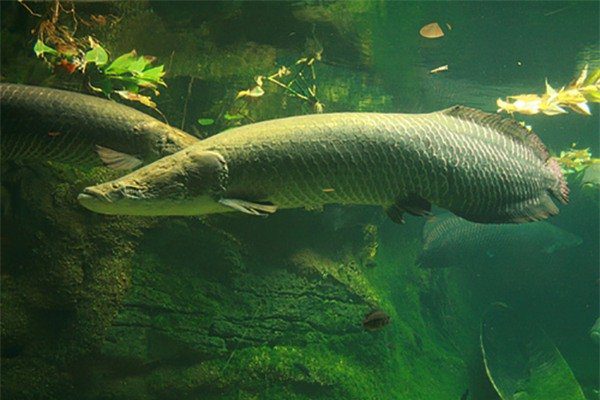
Despite their massive size, due to their beautiful shape and vibrant colors, Arapaima are chosen by South American residents for ornamental fish farming. Furthermore, people in Southeast Asia, particularly in Thailand, also enjoy raising this species.
The Arapaima is considered the largest feng shui fish in our country, holding significant importance. With its large and powerful appearance, many “tycoons” believe that raising Arapaima will help them showcase their power and solidify their status in society. The vivid colors of this fish are also believed to bring prosperity, wealth, and luck to their owners. Therefore, the Arapaima has become a luxurious passion for today’s “tycoons.”
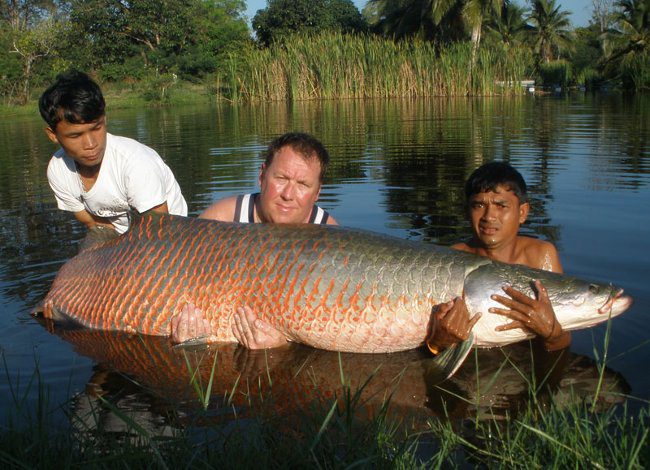
Due to being utilized as food and regarded as a delicacy in South America, Arapaima are heavily hunted.
Besides providing sweet, delicious fish meat for food, few realize that the tongue of the Arapaima is a key ingredient in medicinal preparations.
Specifically, dried Arapaima tongue, combined with guarana bark, creates a mixture used for deworming. Additionally, the scales of the fish are used as a nail file.
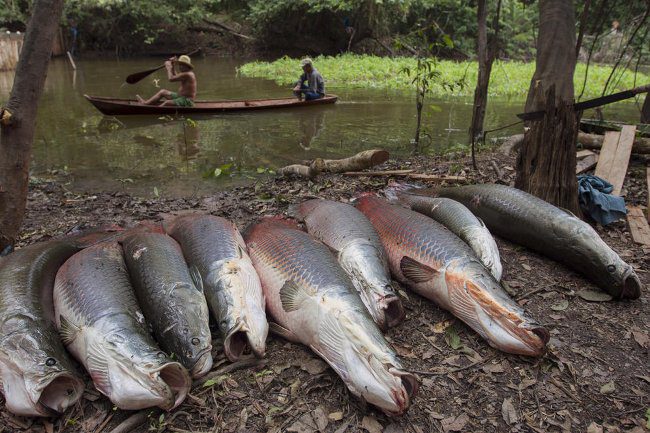

Surveys in fishing communities living in the Amazon state reveal that this species of Arapaima has disappeared from many river sections where they were once frequently found.
According to a study conducted in South America, scientists from the University of California observed and discovered that while the scales of the Arapaima can deform, they remain unscathed, not scratched or torn during attacks from carnivorous Piranha.
They found that the inner layer of Arapaima scales is very hard and flexible, connected by collagen with an outer layer of minerals. Other fish species also use collagen like the Arapaima, but the collagen layers in the scales of this giant fish are significantly thicker than those of other species, with a thickness comparable to a grain of rice. The scales act as an effective natural armor to protect them from predators without hindering their flexibility.
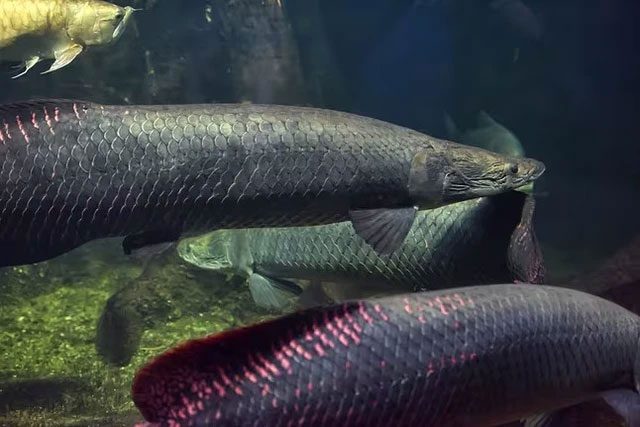
The inner layer of the Arapaima scales is very hard and flexible. (Photo: Sohu).
The characteristics of Arapaima fish scales have become a point of interest for engineers in the fields of armor and composite steel production. These scales have previously been utilized to create various types of bulletproof vests, made from multiple layers of flexible fibers sandwiched between hard plastic sheets. Mimicking these structures in technology could lead to the development of lighter and better materials for armor manufacturing.
Robert Ritchie, a materials scientist and the lead author of the study, further explained that, unlike artificial armor created by humans which requires a third adhesive layer, the fish scales are bonded at the atomic level and grow together to form a solid structure while still maintaining the necessary elasticity. The mineralized collagen serves as the binding structure between the hard and soft material layers.










































